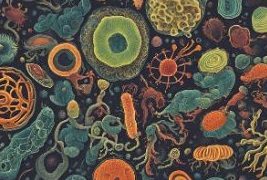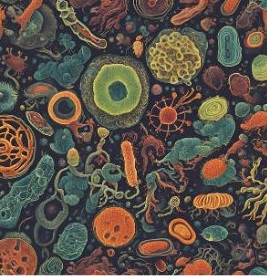Xanthomonas campestris pv. campestris (Xcc) is a vascular pathogen that invades the xylem of Brassica crops. Xcc is a Gram-negative, rod-shaped bacterium with a single polar flagellum. The pathogen is seed-borne, but Xcc is also known to infect crops through contaminated residues and infected weeds. Moreover, Xcc can grow epiphytically and infects through hydathodes or wounding of the plant
Current chemical and antibiotics-based control measures for this bacterium are unsustainable and inefficient. Controlling its infection is therefore essential for a sustainable agriculture.
Chemical treatment of phytopathogens are generally restricted due to resistance development, soil accumulation and environmental and health concerns. Moreover, the use of antibiotics in crop production is undesirable since these compounds are also prone to resistance development, influence the natural microbiota and end up in the food chain as residues. To address this problem, integrated pest management (IPM) has been put forward as a preferred disease management strategy. Within this framework, efforts are made to prevent, characterize and control the disease in a sustainable manner with respect to current cultivation techniques.
Bacteriophages are being evaluated as alternative biocontrol agents to be integrated in IPM. The initial use of bacterial viruses or bacteriophages (phages) to control disease in crops dates back almost a century, when they were used in 1924 to control Xcc in cruciferous crops.
After establishing a representative collection of Xcc strains, researchers isolated and characterized bacteriophages from two clades of phages to assess their potential in phage-based biocontrol. The most promising phages, FoX2 and FoX6, specifically recognize (lipo) polysaccharides, associated with the wxc gene cluster, on the surface of the bacterial cell wall. Next, scientists determined and optimized the applicability of FoX2 and FoX6 in an array of complementary bioassays, ranging from seed decontamination to irrigation- and spray-based applications. Here, an irrigation-based application showed promising results. In a final proof-of-concept, a CaCl2-formulated phage cocktail was shown to control the outbreak of Xcc in the open field. This comprehensive approach illustrates the potential of phage biocontrol of black rot disease in Brassica and serves as a reference for the broader implementation of phage biocontrol in integrated pest management strategies.
Reference: Dominique Holtappels, Kiandro J. Fortuna, Lauren Moons et al. The potential of bacteriophages to control Xanthomonas campestris pv. campestris at different stages of disease development. Microbial Biotechnology (2022) 15(6), 1762–1782
































